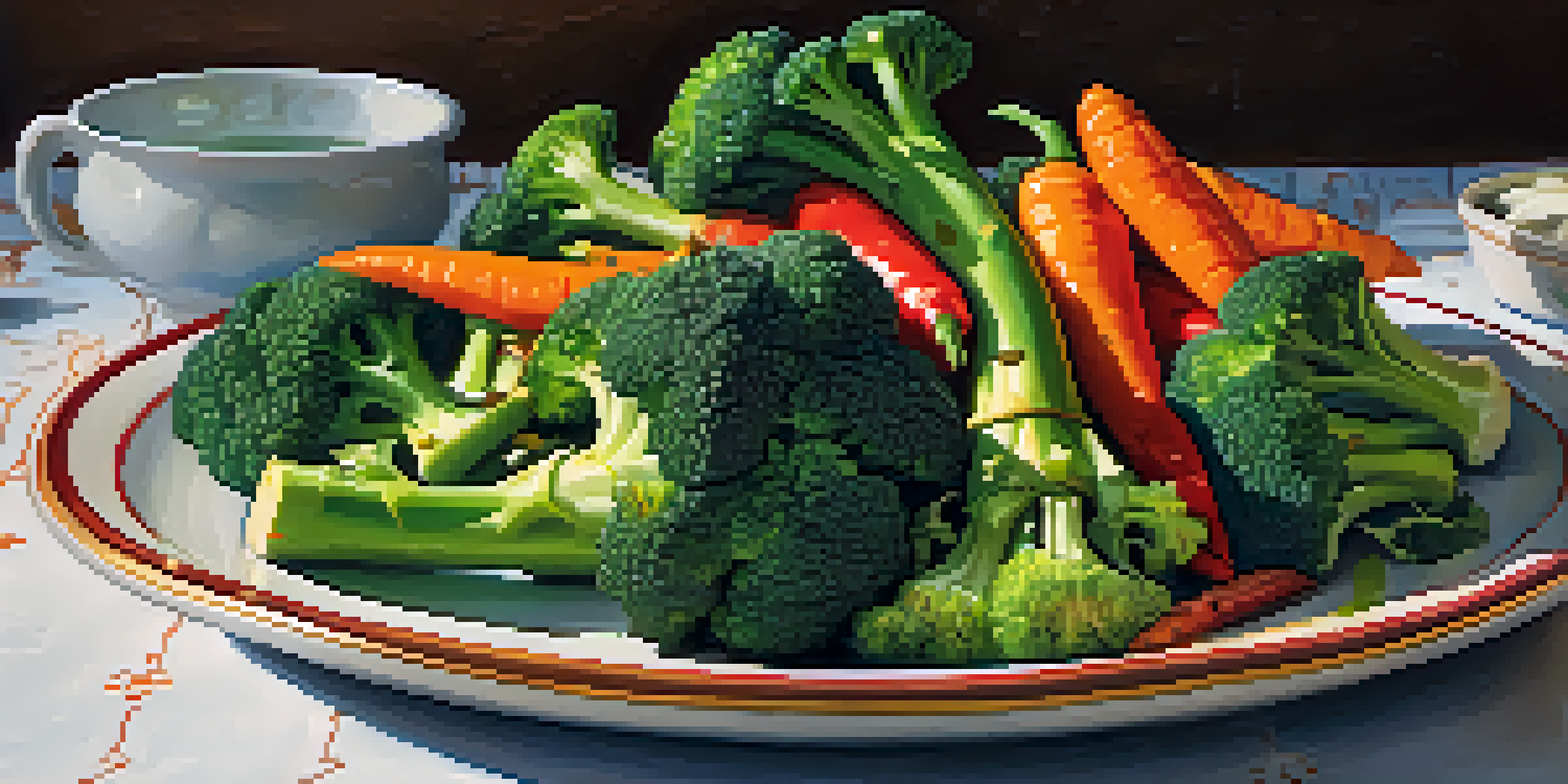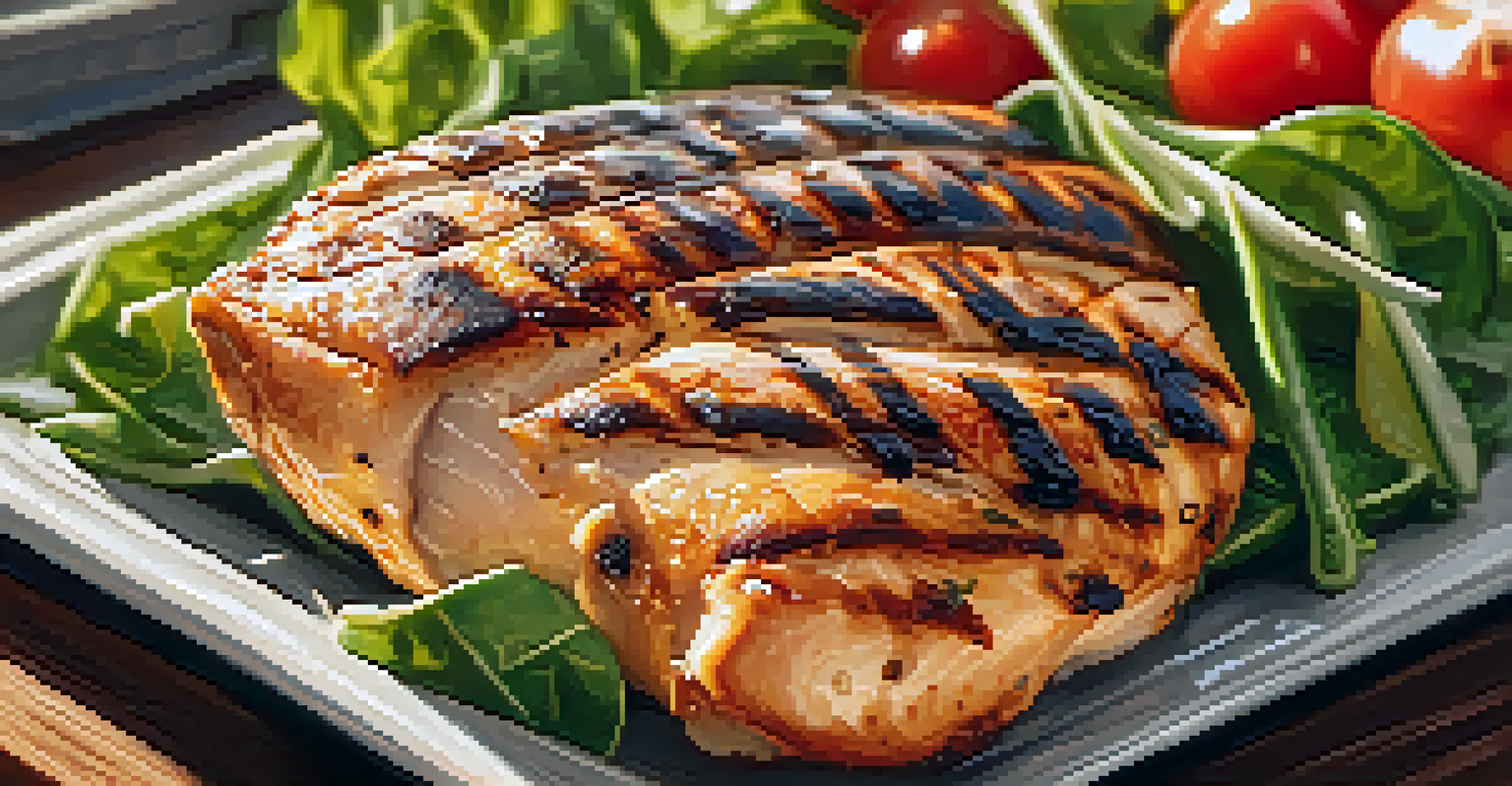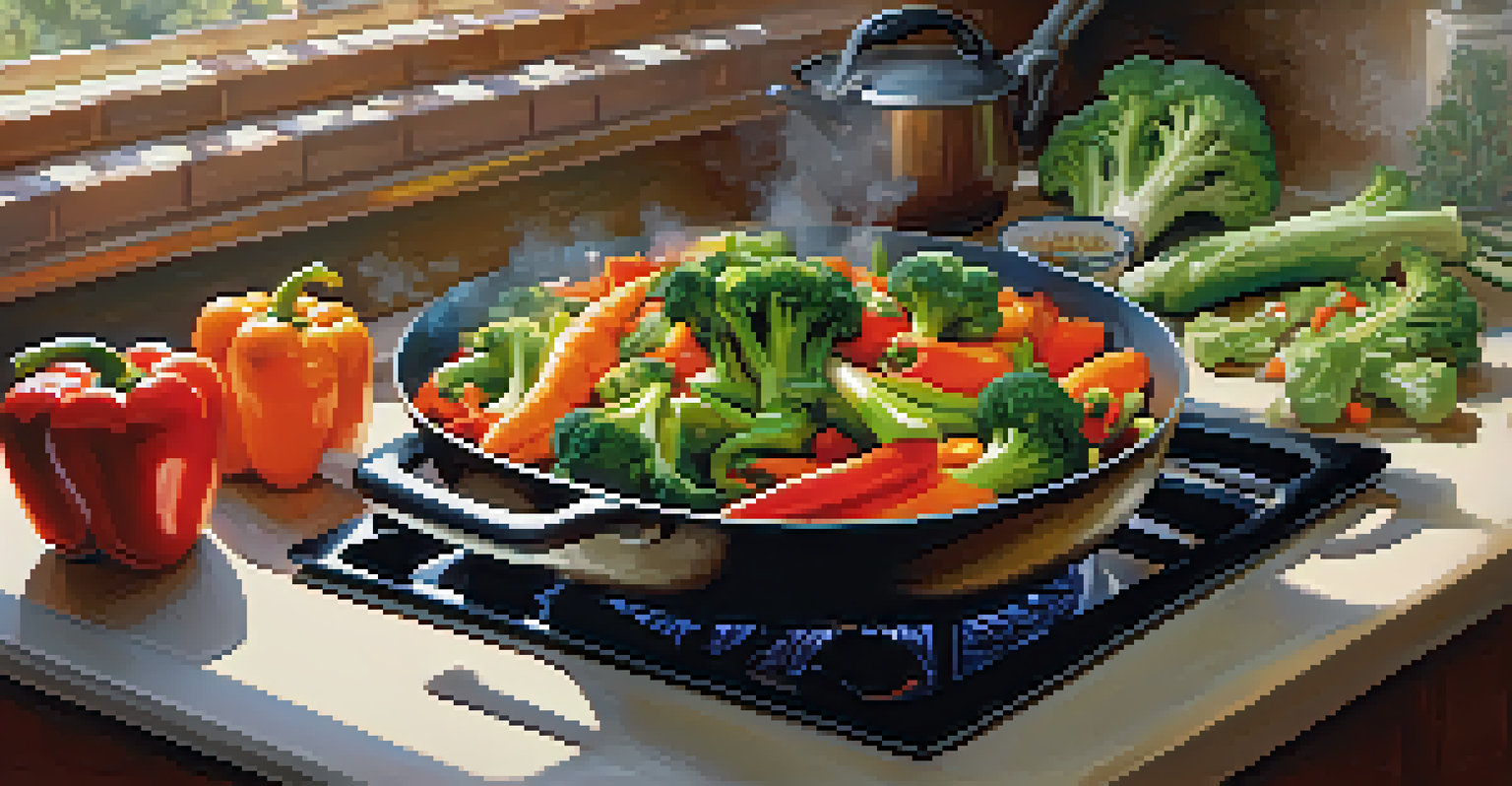Healthy Cooking Techniques for a Balanced Diet

Embrace Steaming for Nutrient Retention
Steaming is one of the healthiest cooking techniques you can use. Unlike boiling, which often leaches nutrients into the water, steaming preserves vitamins and minerals in your vegetables. This means you'll get more of the health benefits and flavor from your food.
Cooking is like love. It should be entered into with abandon or not at all.
Imagine steaming broccoli until it's bright green and crisp, rather than mushy and dull. This method not only keeps the nutrients intact but also enhances the vibrant colors of your food, making your plate more appealing. Plus, it’s quick and easy!
To steam effectively, you can use a dedicated steamer or simply place a colander over a pot of boiling water. This versatile technique is perfect for a variety of foods, from vegetables to fish, ensuring your meals are both nutritious and delicious.
Grilling: A Flavorful Way to Cook Lean Proteins
Grilling isn't just for summer barbecues; it's a fantastic way to cook lean proteins like chicken and fish while adding a smoky flavor. The high heat cooks the food quickly, helping to seal in juices and flavor without the need for excess oils or fats.

Picture biting into a perfectly grilled chicken breast, seasoned just right, with those beautiful grill marks adding to the visual appeal. Grilling also allows the fat in the meat to drip away, making it a healthier option compared to frying.
Steaming Retains Nutrients
Steaming preserves vitamins and minerals in vegetables, making your meals both nutritious and visually appealing.
To make the most of this technique, marinate your proteins beforehand. This not only enhances the flavor but can also help tenderize tougher cuts, making them even more enjoyable on the grill.
Sautéing: Quick Cooking for Busy Days
Sautéing is a fast cooking method that uses a small amount of oil over high heat, perfect for busy weeknights. You can whip up a delicious stir-fry in under 30 minutes, packing in a variety of colorful vegetables and lean proteins.
Let food be thy medicine and medicine be thy food.
Think of sautéing as a dance in the kitchen; you quickly move your ingredients around the pan, allowing them to cook evenly. This technique retains the texture and flavor of your food, making each bite enjoyable.
When sautéing, choose healthy oils like olive or avocado oil, and don’t hesitate to add herbs and spices for an extra flavor boost. This method not only saves time but also elevates your meals to restaurant-quality dishes.
Baking: A Low-Fat Cooking Technique
Baking is an excellent cooking technique for preparing a variety of dishes, from vegetables to whole grains, all with minimal added fat. By using the oven, you can achieve a crispy texture without deep-frying, keeping your meals healthier.
Imagine a tray of roasted sweet potatoes, caramelized to perfection, and bursting with flavor. Baking enhances natural sweetness while allowing you to experiment with different seasonings, making it a versatile option for any meal.
Grilling Adds Flavor Healthily
Grilling lean proteins infuses them with smoky flavor while allowing excess fat to drip away, resulting in healthier dishes.
To bake effectively, toss your ingredients with a bit of oil and your favorite spices, then spread them out on a baking sheet. This method is not only healthy but also allows you to prepare multiple components of your meal at once.
Slow Cooking: Flavorful and Convenient Meals
Slow cooking is a fantastic way to prepare hearty meals with minimal effort. By letting your ingredients simmer for hours, you allow flavors to develop deeply, resulting in comforting dishes like stews and soups.
Picture coming home after a long day to the aroma of a savory beef stew, ready to be enjoyed. The beauty of slow cooking is that you can throw in your ingredients in the morning and let the magic happen while you're busy with other tasks.
Use a slow cooker to make meal prep easier and healthier. Opt for lean meats, lots of vegetables, and whole grains to create a balanced meal that’s ready whenever you are.
Blanching: A Prepping Technique for Freshness
Blanching is a quick cooking method that involves briefly boiling food and then plunging it into ice water. This technique is perfect for preserving the vibrant color and crisp texture of vegetables, making them more appetizing.
Consider blanching green beans before adding them to your salad; they will maintain their bright color and crunchy texture. This method also helps remove any bitterness, enhancing the overall flavor of your dishes.
Raw Foods Boost Nutrient Intake
Incorporating raw ingredients like salads and smoothies enhances your diet with essential vitamins and minerals.
Blanching is also a great way to prep vegetables for freezing, locking in freshness for later use. It’s a simple yet effective technique that can elevate your meal prep game.
Roasting: Enhancing Natural Flavors
Roasting is a cooking method that uses dry heat in the oven to enhance the natural flavors of your ingredients. The high heat caramelizes the sugars in vegetables, bringing out their sweetness and creating a deliciously crispy exterior.
Imagine biting into a perfectly roasted carrot, sweet and tender, with a slight char that adds depth to each bite. This technique is perfect for root vegetables, but can also be used for meats and fish, making it incredibly versatile.

To roast effectively, toss your ingredients with a bit of oil and your favorite seasonings, then let the oven do the work. This method not only makes your food taste amazing, but it also requires minimal hands-on time, allowing you to focus on other aspects of your meal.
Incorporating Raw Ingredients for Nutrient Density
Incorporating raw ingredients into your diet can significantly boost your nutrient intake. Foods like salads, smoothies, and fresh salsas are packed with vitamins and minerals, providing a refreshing addition to your meals.
Think of a vibrant salad filled with leafy greens, colorful veggies, and a drizzle of olive oil; it’s not only visually appealing but also incredibly nourishing. Eating raw foods can help you feel fuller and more satisfied, making it easier to maintain a balanced diet.
To make raw ingredients a staple in your meals, experiment with different combinations and dressings. This way, you can keep your meals exciting and diverse while reaping the benefits of fresh, nutrient-dense foods.